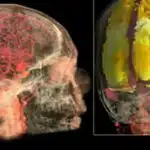by Kaisa Kapanen: Hatha Yoga has almost become synonymous with asana practice,…

and although it does refer to a set of physical poses and sequences, in its essence Hatha yoga is so much more than that.
The word Hatha originates from Sanskrit, and is translated as the union of the opposites. ‘Ha’ represents the sun and ‘tha’ represents the moon, or the Pingala and Ida within us. Hatha yoga aims to bring these two opposites in balance, and essentially prepares the body for higher possibilities. Without the deeper elements present, yoga becomes only about the body, and much of the benefits will be lost.
Hatha yoga as the foundation
Hatha yoga as a system was introduced by yogi Swatmarama in the 15th century CE. Swatmarama compiled the Hatha Yoga Pradipika from earlier Hatha yoga texts, and it is said to be the oldest surviving text on Hatha yoga. The Hatha Yoga Pradipika defines the fundamental techniques for attaining liberation through the physical practices of Hatha Yoga.
During the early 20th century the great yogi T. Krishnamacharya made the practice more known when he traveled through India giving demonstrations of yoga asanas. Hatha Yoga is considered to have entered the west, and the mainstream, after 1947 when the first foreign female student of Krishnamacharya, yogini Indra Devi, opened a yoga studio in Hollywood.
Until today, Hatha yoga remains the most popular form of yoga, and is the foundation of different types of yoga, such as Bikram, Ashtanga and Kundalini yoga.
The complete yogic path
Traditional Hatha yoga is a complete yogic path, including moral disciplines, asana practice, pranayama and meditation. According to the Hatha yoga Pradipika, asana should be practiced for gaining steady posture, health and lightness of body. Mastering the various asanas, however, is not the goal of the practice, but rather obtaining qualities that aid meditation, such as muscle flexibility, strength, concentration and self-withdrawal. Hatha yoga promotes a balance between the body and the mind by bringing the attention to the breath and stilling the fluctuations of the mind.
Hatha yoga as a tool to reaching liberation
Although focusing on the third and the fourth limb of the Eight Fold path, Hatha yoga also relies on the first two, the Yama’s and the Niyama’s. A yoga practice without these fundamental ethical guidelines is not necessarily bringing the desired results into one’s practice. The aim of Hatha yoga is to remove obstacles in order for the practitioner to get further on the path of yoga. It remains a tool and training for practitioners to reach not only the numerous health benefits it can offer, but to act as a path to reaching Samadhi, liberation.
Hatha Yoga today
Although Hatha yoga also means ‘forceful’ in Sanskrit, it remains a slow-paced practice. Currently Hatha Yoga is mostly describing a gentle, basic class with no flow between poses. A class of Hatha yoga will likely include more simple asana practice with some breathing exercises and meditation. This makes it a great place to begin practicing yoga.
Hatha yoga is designed to release tension in both body and mind, and move the practitioner along the Eight Fold path of yoga. It can keep the body healthy, the mind focused and the soul in harmony. With a regular practice we can create a balance of strength and flexibility for our bodies, and we can learn to balance between effort and surrender. This beautiful, ancient system will then slowly and steadily prepare us for the ultimate balance in life.

















































